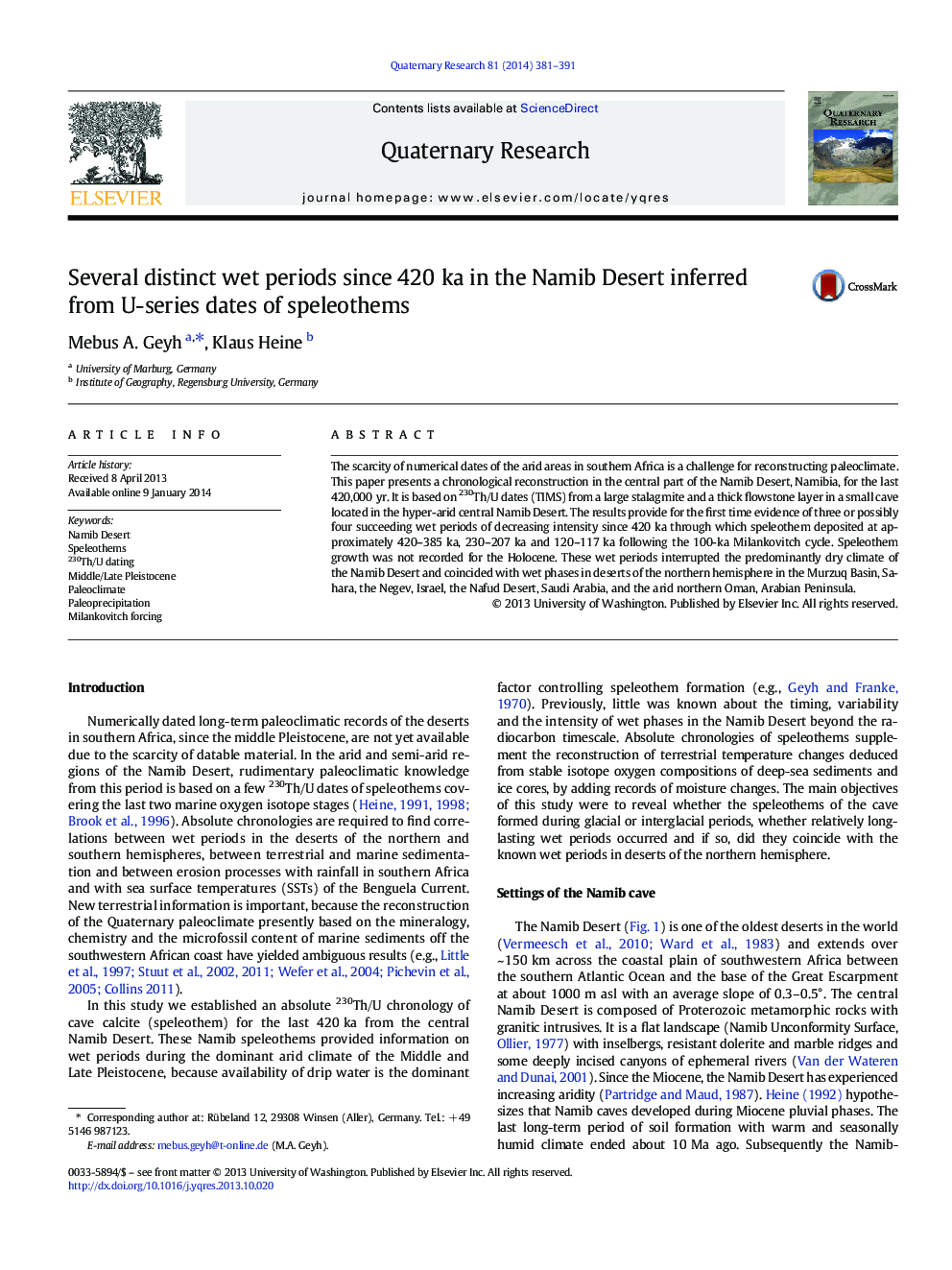| Article ID | Journal | Published Year | Pages | File Type |
|---|---|---|---|---|
| 1045261 | Quaternary Research | 2014 | 11 Pages |
The scarcity of numerical dates of the arid areas in southern Africa is a challenge for reconstructing paleoclimate. This paper presents a chronological reconstruction in the central part of the Namib Desert, Namibia, for the last 420,000 yr. It is based on 230Th/U dates (TIMS) from a large stalagmite and a thick flowstone layer in a small cave located in the hyper-arid central Namib Desert. The results provide for the first time evidence of three or possibly four succeeding wet periods of decreasing intensity since 420 ka through which speleothem deposited at approximately 420–385 ka, 230–207 ka and 120–117 ka following the 100-ka Milankovitch cycle. Speleothem growth was not recorded for the Holocene. These wet periods interrupted the predominantly dry climate of the Namib Desert and coincided with wet phases in deserts of the northern hemisphere in the Murzuq Basin, Sahara, the Negev, Israel, the Nafud Desert, Saudi Arabia, and the arid northern Oman, Arabian Peninsula.
